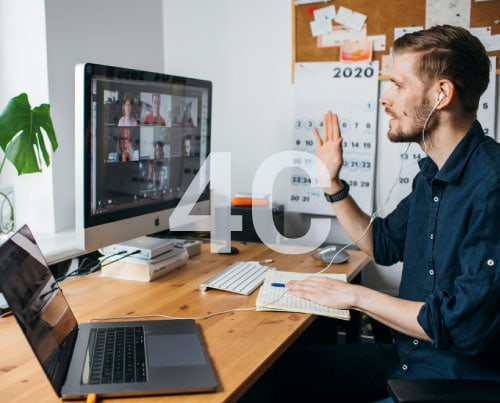Blog Post Heading
Blog Post Content
By Rene Paez
Director of University Partnerships, MindEdge Learning
For the last seven years, I’ve been teaching on campus as an adjunct business professor at a South Florida university. As it happened, I took the Spring 2020 term off.
And boy, am I glad that I did.
As I’ve watched my friends and colleagues make the pivot to remote teaching, I do not envy the ones who have been “dropped into the deep end of the pool,” and are having to adjust their teaching methods very quickly. The pivot has been especially challenging for those colleagues with large class sizes, who have been teaching for decades and never had any plans for “going online”.
In my full-time role as a partnerships manager here at MindEdge, I’ve had the good pleasure of talking with many faculty, administrators, and instructional designers about how to build the foundation of a good online learning experience—and the importance of using great materials in the classroom.
It’s been amazing to watch what my colleagues have been doing to adapt to this never-before-seen season of social isolation. In short, thank God for Zoom. Just a few weeks ago, many of these faculty members had never heard of Zoom video calls. Today, Zoom is the short-term panacea for remote teaching.
At the institution where I teach, we use Canvas. We know that across HigherEd, LMS platforms such as Canvas play a crucial role in communicating with students, posting assignments and exams, and grading—whether the course is on campus face-to-face, fully online, or a blended learning experience. Fortunately, this university had instituted a big push, starting in the last academic year, to encourage the use of Canvas and all its capabilities—a decision that is now making the current transition a bit easier.
The student transition seems to have been a little bumpier. They’ve had to deal with a flurry of emails directing them toward a new way of doing things, while adjusting their lives from on-campus to off-campus living and figuring out their own new normal.
For students who are having trouble staying engaged, it doesn’t seem that technology is the problem, at least in the short term. Rather, the problem is having to adjust to a new way of learning. Remote learning just isn’t the same as live synchronous learning, it seems, especially in the more traditional, larger-course settings where plenty of students have “ghosted” this new process. (My colleagues tell me that students further along their pathway in upper-level classes seem to be more fully plugged into their new reality.) Then again, most of these larger courses only had the bare minimum of asynchronous elements built into the plan, which is proving to be a problem now. When you can’t get to the classroom, there has to be more than a reading and a lecture to serve as the basis for student engagement.
All parties are starting to see some of the long-term challenges that come with the type of pivot that had to be made in this Spring 2020 term, and how that might affect the near-term future as we deal with the uncertainty of COVID-19. Access, assessment, and accessibility are the three biggest issues for the broader education world as it makes the transition. With each of those factors, critical infrastructure, policy, and practice need to evolve in a hurry to make things better for everyone.
And now, it seems, the question at the top of mind for both faculty and administrators is, What will happen in the Fall 2020 term? Will classes resume back in the classroom, or will they remain online? If they do remain online, what can we do now to prepare for a flexible hybrid environment? With budgets already tight and enrollment uncertainty growing, faculty are considering all the options available to them.
I, too, am thinking about how I’ll plan for my own return to the classroom this fall. Certainly, there’s a strong probability that my course will experience an interruption of some kind. This is Florida. However, the duration and scope of any interruption are unknown. What’s most likely, though, is that something will provide a disruption to one or more of my students and their community, and that will then become a disruption to all.
As a primarily on-campus instructor, I’ll admit that there’s a rhythm and way of life to teaching that’s easy and natural. I do the teaching. Students come to campus, fill up with knowledge and work through the weeks and months of each term.
But, when I put on my MindEdge hat, I’m also deeply in tune with the realities of a fully online learning —and the importance of designing course materials that allow for access, assessment, and accessibility as a primary feature and a way to operate day-to-day. I’m happy that the solutions we have can truly provide those capabilities and integration, no matter how one teaches the course. It also fits all of the things that I look for in course material—ready on day one, low-cost, comprehensive in content, integrated with my LMS, and fully accessible.
So, my short-term answer, my emergency plan, and my long-term approach will line up under the same concept: to build for blended learning. I will do everything I can with my course materials, courseware, and LMS to provide an organized experience for my students. Also, I will operate with the knowledge that one of those weeks, modules or key teaching concepts will get disrupted at some point, so it will be important that everyone is able to make a quick pivot—a pivot that doesn’t have to rely on endless hours of Zoom.
With the right planning, integration, and materials, everyone can build for blended learning. Here’s to everyone making a swift and stress-free transition to a better, blended course environment and a return to being social on campus.
Copyright © 2020 MindEdge, Inc.
